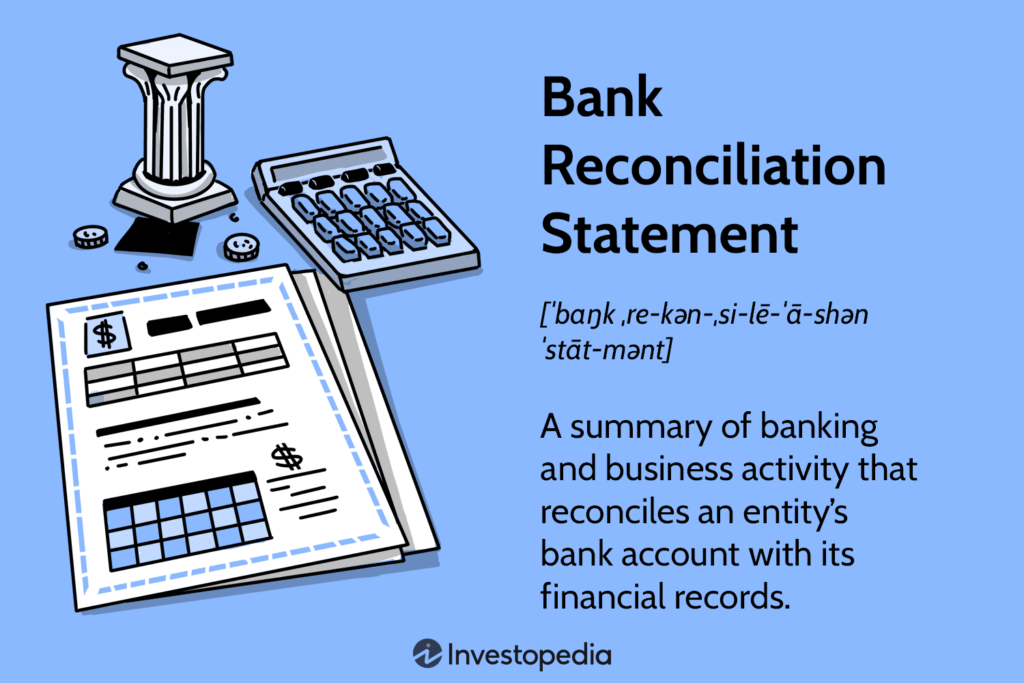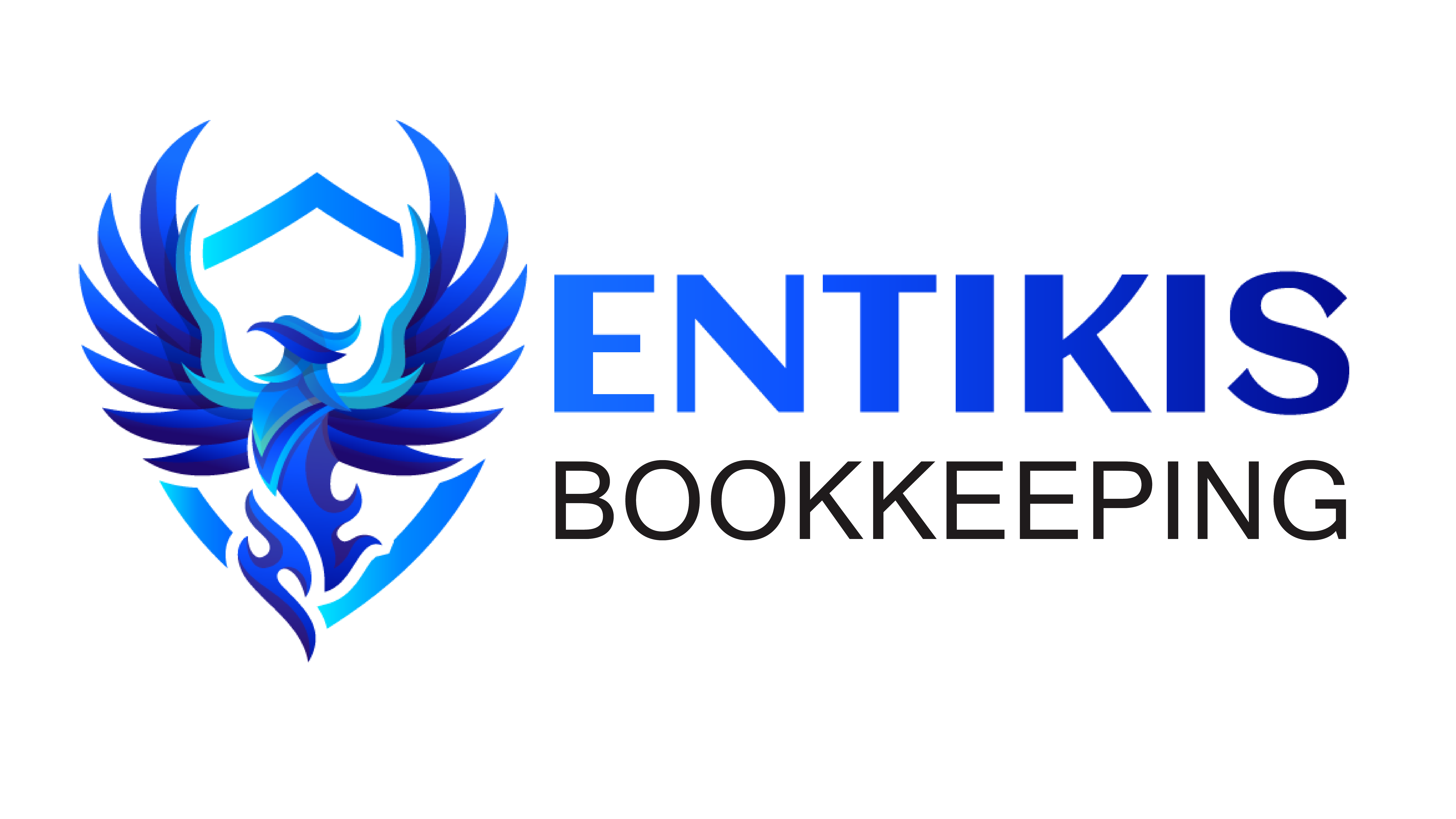Fundamental practice in effective bookkeeping is to reconcile bank statements regularly for businesses of all sizes. It involves comparing the transactions recorded in a company’s accounting records with the transactions reported by the bank in its statement. This process ensures that the company’s financial records accurately reflect its actual financial position and transactions. In this article, we’ll explore the importance of reconciling bank statements regularly and how it contributes to effective bookkeeping practices.

Why Reconcile Bank Statements Regularly?
Accuracy and Integrity of Financial Records: Reconciling bank statements ensures the accuracy and integrity of a company’s financial records. Discrepancies between the company’s records and the bank statement can arise due to timing differences, bank errors, or unauthorized transactions. By reconciling bank statements regularly, businesses can identify and correct these discrepancies promptly, ensuring that their financial records are complete and accurate.
Detection of Errors and Fraudulent Activities: Regular reconciliation of bank statements helps businesses detect errors and fraudulent activities, such as unauthorized withdrawals, fraudulent checks, or accounting errors. Discrepancies between the company’s records and the bank statement may indicate potential issues that require investigation. Prompt detection of errors or discrepancies allows businesses to take corrective action to prevent financial losses or mitigate risks of fraud.
Cash Flow Management: Reconciling bank statements is essential for effective cash flow management. It provides businesses with a clear understanding of their actual cash position, including available funds, outstanding checks, and deposits in transit. Accurate cash flow information enables businesses to make informed decisions about cash management, such as timing payments, managing working capital, and optimizing liquidity.
Compliance and Financial Reporting: Reconciling bank statements regularly is essential for compliance with regulatory requirements and financial reporting standards. Accurate and reconciled financial records are necessary for preparing financial statements, tax returns, and other regulatory filings. By reconciling bank statements, businesses demonstrate transparency and accountability in their financial reporting practices, enhancing credibility with stakeholders and regulatory authorities.
Identification of Bank Errors or Fees: Reconciling bank statements allows businesses to identify and reconcile discrepancies related to bank errors, fees, or charges. Bank errors, such as duplicate transactions or incorrect amounts, can occur occasionally and may go unnoticed without proper reconciliation. By reviewing bank statements regularly, businesses can dispute errors or unauthorized charges with the bank and ensure that they are resolved promptly.
Best Practices for Reconciling Bank Statements
Set a Regular Reconciliation Schedule: Establish a consistent schedule for reconciling bank statements, such as monthly or bi-monthly. Setting a regular reconciliation schedule ensures that the process is conducted timely and efficiently, minimizing the risk of errors or discrepancies going unnoticed for an extended period.
Maintain Detailed Records: Keep detailed records of all financial transactions, including checks issued, deposits made, electronic transfers, and bank charges. Ensure that transactions are recorded accurately in the company’s accounting system and are properly categorized to facilitate reconciliation with the bank statement.
Use Reconciliation Software or Tools: Utilize reconciliation software or tools to streamline the reconciliation process and identify discrepancies efficiently. Many accounting software platforms offer built-in reconciliation features that automate the matching of transactions between the company’s records and the bank statement, reducing manual effort and errors.
Compare Transaction Details Carefully: Carefully compare the details of transactions recorded in the company’s records with those reported in the bank statement. Verify the dates, amounts, and descriptions of transactions to ensure consistency and accuracy. Investigate any discrepancies or unfamiliar transactions promptly to reconcile differences.
Follow Up on Outstanding Items: Follow up on outstanding items, such as uncleared checks or deposits in transit, to ensure that they are accounted for in the reconciliation process. Monitor the status of outstanding items regularly and follow up with the bank or relevant parties to expedite their clearance and reconciliation.
Document Reconciliation Process: Document the reconciliation process, including the steps taken, findings, and resolutions of discrepancies. Maintain records of reconciled bank statements, supporting documentation, and reconciliation reports for audit trail purposes and future reference.
Review and Approval: Ensure that the reconciliation process is reviewed and approved by authorized personnel, such as the company’s financial controller or accountant. Reviewing and approving reconciliations provide an additional layer of oversight and accountability, enhancing the accuracy and reliability of financial records.
Conclusion
Reconciling bank statements regularly is essential for maintaining accurate financial records, detecting errors or discrepancies, managing cash flow effectively, and ensuring compliance with regulatory requirements. By adhering to best practices for reconciling bank statements, businesses can enhance their financial transparency, integrity, and accountability, ultimately contributing to their long-term success and sustainability. Incorporating regular reconciliation into the company’s bookkeeping practices demonstrates a commitment to sound financial management and strengthens confidence among stakeholders, investors, and regulatory authorities.
If You Are Looking For Professional Bookkeeping Services, Please Contact Us At Admin@Entikis.Com And 817-415-1715 To Learn More About How Entikis Bookkeeping Can Support Your Journey To Success! Located At 640 Taylor St Suite , Fort Worth, TX, United States, Texas. We Offer Professional Bookkeeping Services For Businesses In The Burleson, Fort Worth And The Surrounding Tarrant County Metroplex.




